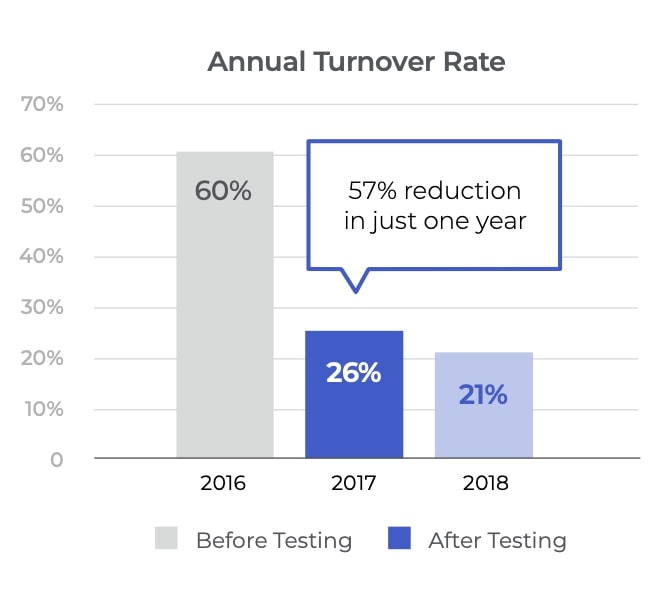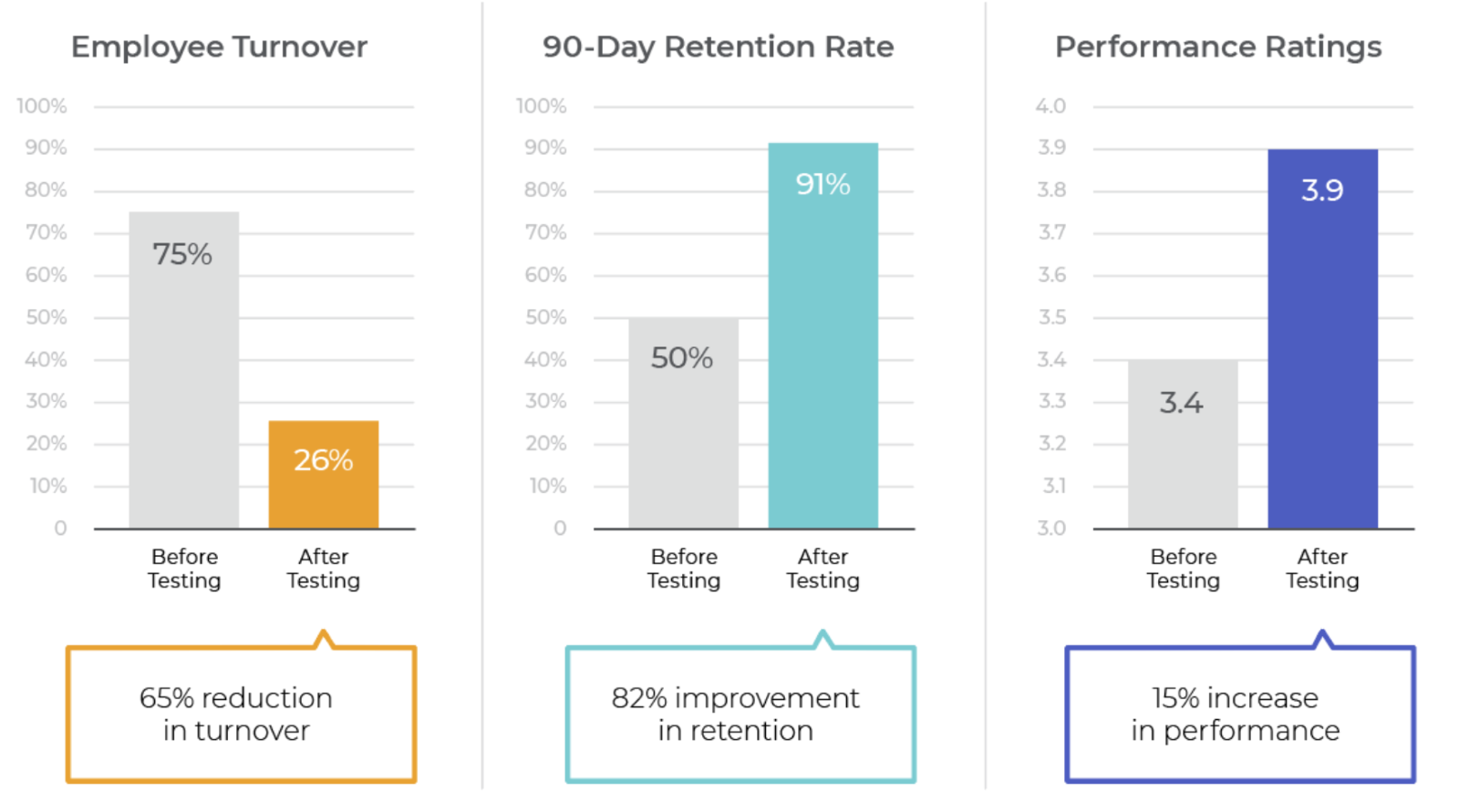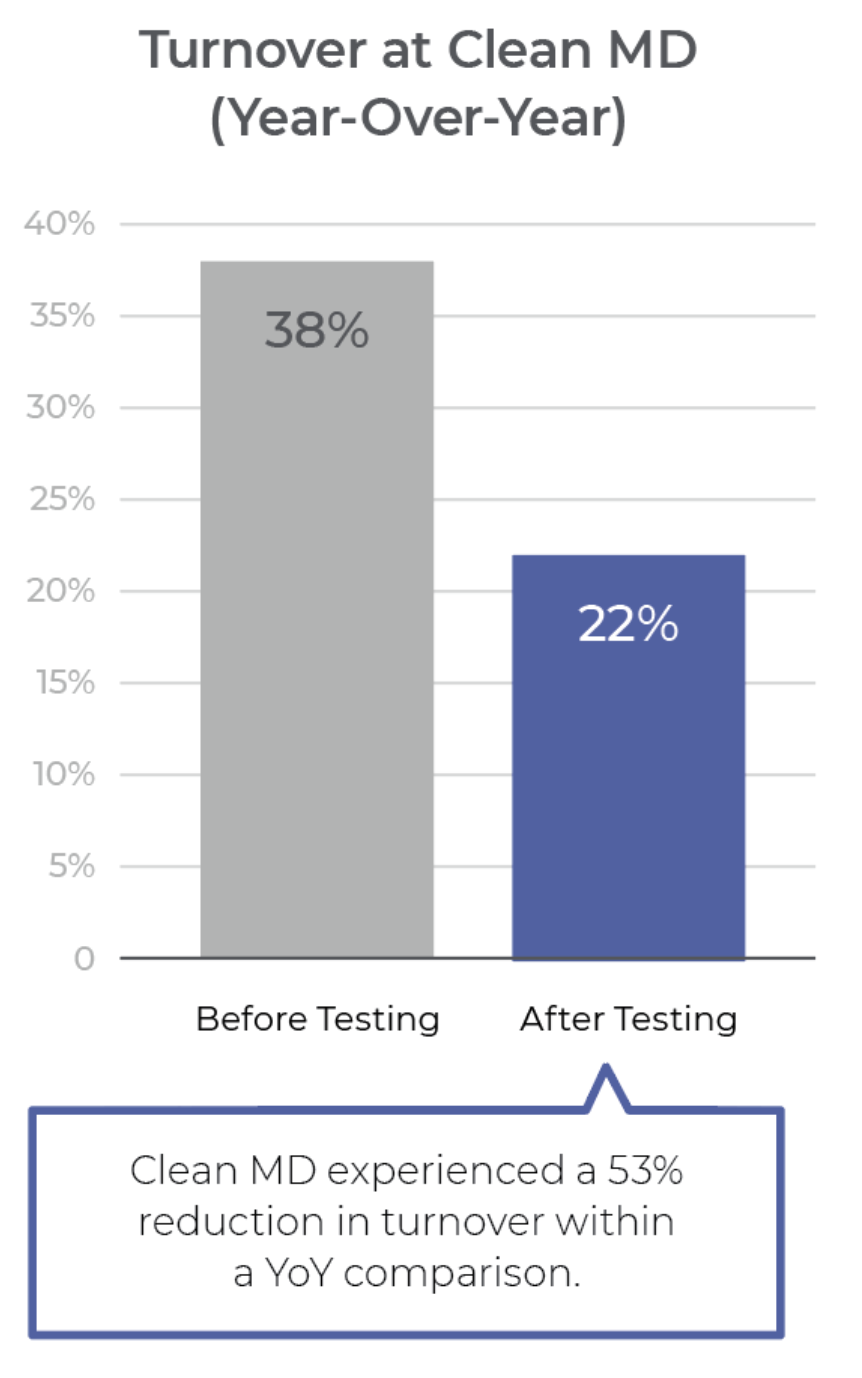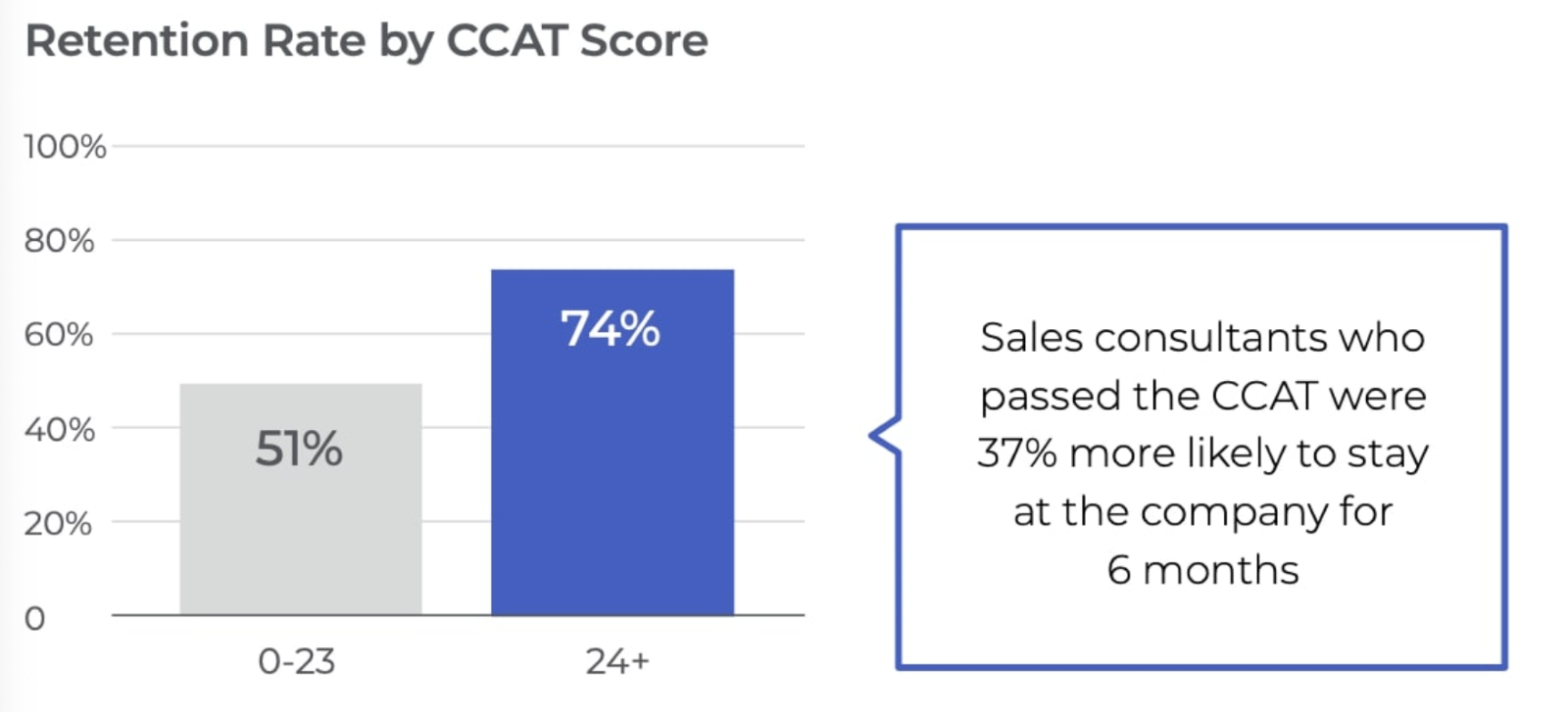When employees leave an organization, it creates an unfortunate ripple effect. You lose valuable experience, productivity dips, and the training you’ve invested in literally walks out the door. But is it possible to prevent turnover by taking steps during your hiring process?
Assessments have emerged as a powerful tool to address the issue of turnover. By incorporating pre-employment assessments into the hiring process, organizations gain the ability to make more informed decisions and identify candidates who are primed for success in their roles and within the organization. Assessments provide invaluable insights into candidates like aptitude, personality, and technical skills. The result? A higher quality of hire, increased productivity, and a significant decrease in turnover rates.
Let’s explore five real-life case studies that showcase the impact of assessments in reducing turnover and delivering additional benefits for organizations!
Software company achieved 70% lower turnover and enhanced productivity
Signpost, a software company specializing in customer communication, wanted to enhance their recruitment process to address high turnover following an acquisition. To achieve this, they leveraged assessments, specifically the General Aptitude Mobile Evaluation (GAME), Employee Personality Profile (EPP), and Typing Test. These assessments provided valuable insights into candidates' cognitive aptitude, personality traits, and typing speed and accuracy. By incorporating Criteria's assessments, Signpost achieved remarkable results, including a significant 70% reduction in turnover for inbound phone support agents, improved training completion rates, heightened productivity among new hires, increased advancement opportunities, and an enhanced candidate experience through branded assessment experiences.
This comprehensive approach to talent assessment enabled Signpost to optimize their recruitment process and drive positive results across various aspects of their organization.

Schweiger Dermatology reduces their turnover by 57%
Schweiger Dermatology Group operates over 50 medical offices, making employee retention one of their top priorities. Their goal was to reduce their high turnover rate of 60% annually. Determined to make a change, they implemented a multi-pronged approach, which included both pre- and post-hire strategies. On the post-hire side they worked on building out a more engaged management team and rolling out a compelling mission and company values. For their pre-hire strategy, they partnered with Criteria to administer pre-employment tests, such as the Criteria Cognitive Aptitude Test (CCAT) and the EPP, to ensure they were hiring the right candidates.
Cognitive and personality assessments like the CCAT and EPP are effective predictors of employee job performance due to their ability to measure critical thinking, problem-solving skills, and behavioral traits relevant to specific roles. As a result of implementing this assessment strategy, Schweiger experienced a significant reduction in turnover. Their with turnover rate dropped to 26% in 2017, representing a 57% decrease in turnover. This improvement remained consistent, with their turnover rate going as low as 21% in 2018. The assessments also led to an improvement in candidate quality and strengthened the employer brand, attracting a more professional pool of candidates.

Heartland ECSI achieves 65% reduction in turnover and boosts performance
Heartland ECSI's HR department experienced staggering 75%turnover rate in 2016, which was significantly above the industry average. To address this challenge, they used the CCAT, EPP, and Computer Literacy and Internet Knowledge Test (CLIK) tests to identify candidates with the right aptitude, personality, and technical skills for their call center.
After implementing Criteria's tests, Heartland wrapped up 2017 with a 26% turnover rate, representing a massive 65% reduction in turnover from the previous year. The tests also facilitated better candidate filtering, faster onboarding and training, cost savings, higher performance ratings, and increased productivity.

Assessments reduce turnover and cut pay roll costs for commercial cleaning company
Clean MD, a commercial cleaning company, faced the challenge of prioritizing successful applicants for their cleaning technician roles. Recognizing the limitations of relying solely on resumes, Clean MD incorporated assessments into their hiring process. They administered the Workplace Productivity Profile (WPP), a risk assessment that predicts rule-adherence, the Criteria Basic Skills Test (CBST), a skills assessment that evaluates an individual’s proficiency, and the personality test EPP.
After testing they experienced a significant 53% decrease in turnover, reducing it from 37.7% to 22%. This reduction in turnover resulted in substantial cost savings, with a $45,500 decrease in payroll costs. Moreover, Clean MD benefited from streamlined hiring and training processes, improved quality of hire, and increased focus on business growth. The assessments played a crucial role in identifying candidates who were better suited for the roles, leading to enhanced performance and overall success for Clean MD.

Technology call centre uses cognitive assessment to reduce turnover
A leading Internet domain registrar and web hosting company faced the challenge of reducing turnover and improving retention rates in its call centers for sales consultants. By incorporating the CCAT assessment into their hiring process, the company aimed to enhance training completion rates and employee retention. The CCAT was administered to evaluate cognitive aptitude, problem-solving skills, and critical thinking abilities.
The results showed a strong correlation between CCAT scores and training completion rates, as well as employee retention after 6 months. The implementation of a minimum CCAT score led to significant improvements in training completion and retention rates, reduced turnover, and drove organizational success.

---
By incorporating assessments into the recruitment process, these organizations experienced a transformative impact on their workforce dynamics. Not only were they able to accurately predict employee turnover, but they also witnessed a remarkable improvement in job satisfaction and overall workforce stability. Assessments provided invaluable insights into candidates' skills, abilities, and alignment with specific roles, empowering organizations to make well-informed hiring decisions that effectively reduced turnover rates. By precisely assessing candidates' capabilities and fit, these organizations successfully built high-performing teams, retained top talent, and cultivated a more engaged and stable workforce.




